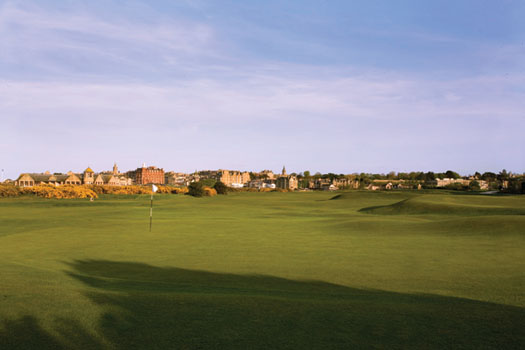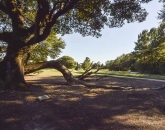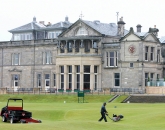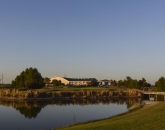
Old Tom Morris had done a superb job creating the 12-hole Prestwick course and was the reigning Open champion. He was also a fine, if sometimes lucky, greenkeeper. Old Tom had learned the merits of top-dressing the course with sand by accident. One day he had spilt sand on a bare piece of Prestwick turf. A few months later he noticed how healthy and strong the grass had grown. From that point on, he was forever top-dressing the greens, much to the annoyance of members.
In 1864, Tom was asked to come back to St Andrews and was employed as its keeper. He was paid £50. His terms of employment with the R&A were that he was to have full charge of the links, although later for major changes, the Green Committee's approval was required. By 1866 Tom was filling in divots with sand and top-dressing the links. Initially the locals complained about the sand on the surfaces, but when the condition of the course started to improve they soon changed their tune.
In 1869 Tom started work on the new 18th green. According to David Malcolm and Peter E Crabtree in their book, Tom Morris of St Andrews, “The Home, or 18th green, was situated some 30–40 yards in front of where the green is today and was reported to be ‘on broken ground in a hollow, with the ground sloping down both sides’." Behind this a gully ran right across the links from Old Tom’s shop to the R&A clubhouse. The remnant of this gully today is the Valley of Sin.
During construction, they found a burial pit of human bones, which probably dates from the plagues. Given that the labourers were a superstitious lot (witchcraft trials were still coming to courts as late as 1835 in nearby Strathkinness), they were afraid but Old Tom told them that if they wanted to be paid, they would have to finish the job. They duly did. The green was much lauded and Tom often said that it was the best work he had done.
In the same year Tom raised and re-turfed the area by the Swilcan Burn and in 1872 created a new green, which we know today as the green on the first hole. According to Jarrett and Mason, however, this was originally intended to be for the now-famous 17th, which would have created a straight hole, with no need to drive over the railway sheds. As a side note regarding the Swilcan Bridge, it shouldn't actually be referred to as such. It is the "Golfers’ Bridge" and has been for hundreds of years. The Swilcan Bridge is the slightly less attractive larger road bridge about 80 yards to the left as you walk up the 18th fairway.











